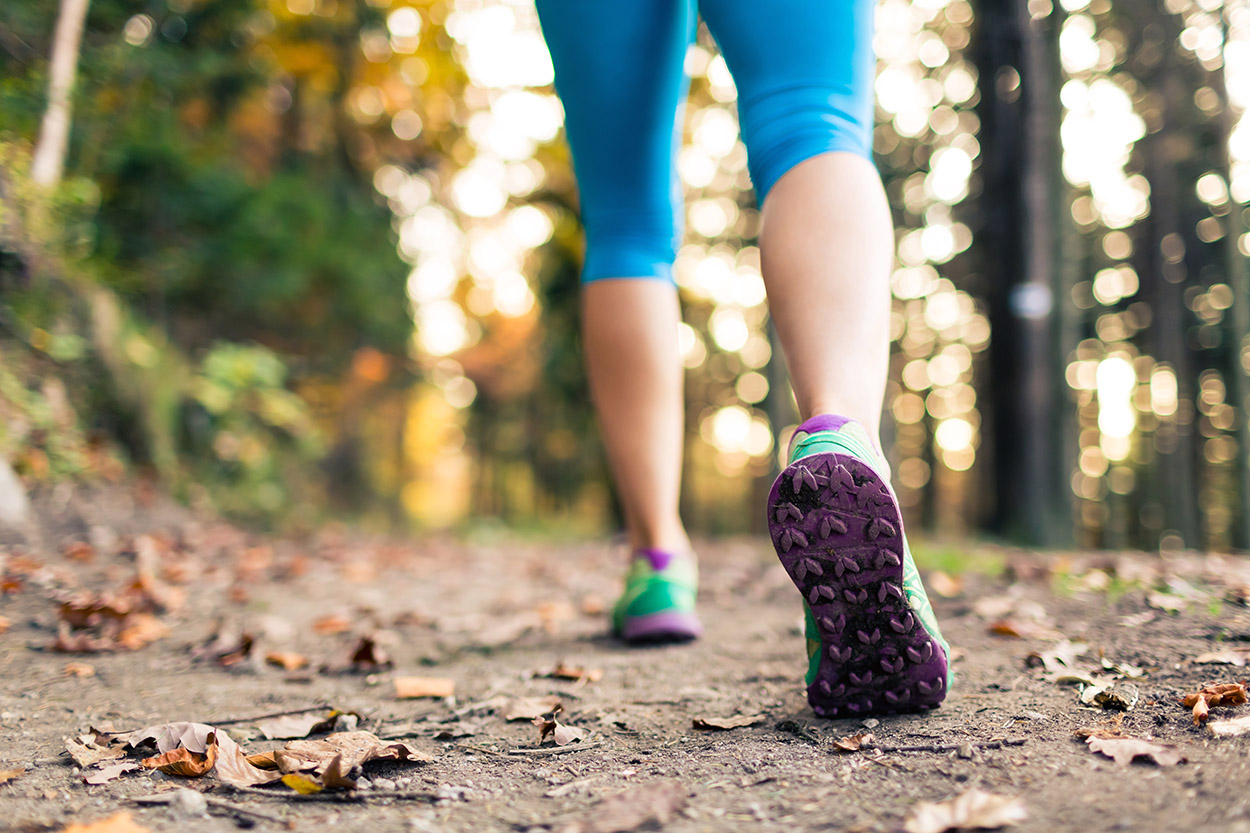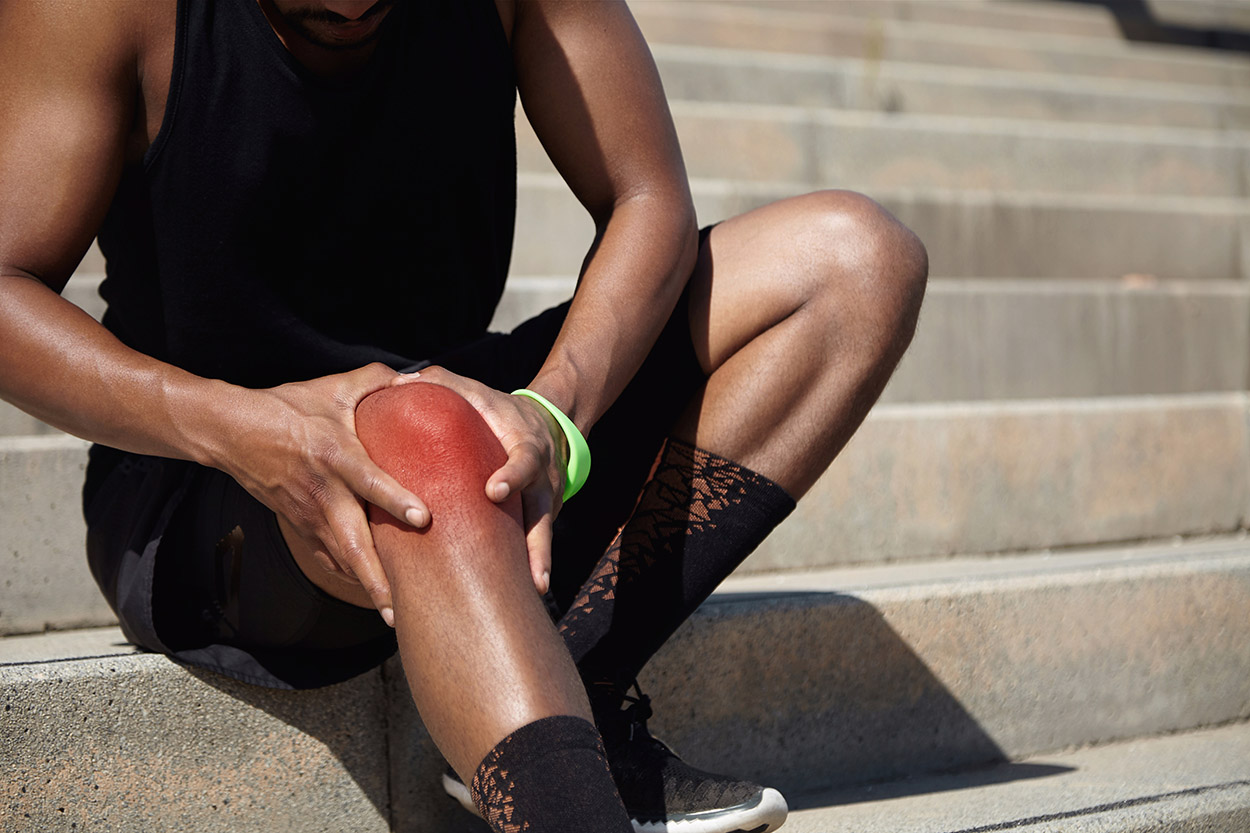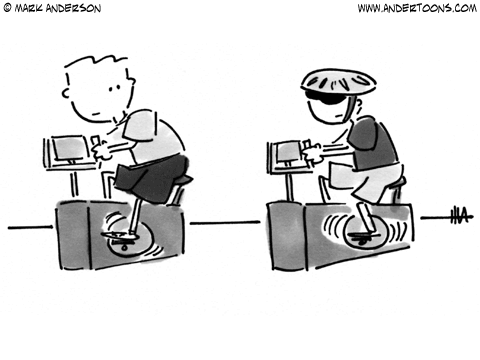 McMillan Running Pace Calculation
McMillan Running Pace Calculation

How to Start Running: Training, Safety, and How to Improve Your Pace
- Guide Authored by Corin B. Arenas, published on September 18, 2019
Running is one of the most practiced sports in the world. In the U.S. alone, around 55.9 million people took part in some form of running activity in 2017, according to Statista.[1]
Why is running so popular? People have different reasons for running. But for many, it's the easiest, most time-efficient way to get aerobic exercise.
For adults 18 to 64, the World Health Organization (WHO) recommends 150 minutes of moderate to intense aerobic exercises throughout the week. It should be done in bouts of at least 10 minutes to experience health benefits.
While exercise is one of the primary reasons for running, people are motivated because it helps them relieve stress, socialize, and have fun.
You can even track your run times by using the pace calculator on top of this page.
To get yourself running, read on to learn more.
The Benefits of Running

Beyond weight loss, adopting a jogging routine provides many health benefits.
A study published in Progress in Cardiovascular Diseases found that runners can live 3 to 6 years longer than those who do not.[3]
If you keep at it, it can prevent serious illness in the future, according to Mark Cucuzzella, M.D., author of Run for Your Life and professor at West Virginia University School of Medicine.[4]
Here are several major health benefits of running:
- Keeps the heart strong – A 2014 study shows runners have 30% lower risk of dying from heart failure.[5] It helps strengthen endothelial cells, which is the lining around blood vessels. This improves circulation of nutrient-rich blood to organs and muscles.
- Decreases risk of type 2 diabetes – A few rounds a week helps improve blood sugar level control. A 2013 research showed that runners (followed over a 6-year period) have lower risk of getting diabetes mellitus by 12%.[6]
- Aids mental clarity – 7 weeks of training increases cognitive flexibility, which is the brain's capacity to shift between tasks.[7] Moreover, a 2014 research found that people who run over 15 miles a week had at least 40% lower risk of dying from Alzheimer's disease.[8]
- Reduces chances of developing cancer – Regular exercise is known to help reduce the risk of different types of cancer. Running, in particular, can lower the risk of kidney cancer by up to 61%.[9] For women, a study showed it can reduce the risk of breast cancer mortality by 40.9%.[10]
- Helps avoid joint problems – A few rounds a week can decrease your chances of developing osteoarthritris.[11] It also reduces inflammation around joints, which strengthens muscles and cartilages.
- Helps slow down age-related decline – According to a 2018 study, running can increase the production of enzymes, telomerase and telomeres, which slow down cellular aging.[12] It lengthens the life of chromosomes and keeps telomere caps from fading off.
How to Prepare for Running

Whether you're a beginner or trying to get the habit back, the following are the essentials you must prepare to get on the right track.
Invest in Running Shoes and Gear
Make sure to get a pair of comfortable shoes. The level of comfort in footwear can help reduce injury. Go to a store and try out different pairs. Avoid purchasing shoes online unless it's the right size and you've tested them out yourself.
While at the store, try out socks that are breathable with good cushion. This can lessen impact and friction that causes blisters. For clothing, choose lightweight tops and bottoms that keep you dry and comfortable during your workout.
Consider getting light-weight water bottles if your route does not have drinking fountains. It's important to keep yourself hydrated before, during, and after a run, especially if you're going on long distances. Take note: Do not drink too much water to avoid going on sudden bathroom breaks while training.
Commit to a Training Plan
Your training plan will depend on your goal and how much time you can devote every week. According to The New York Times' running guide, the following is a basic formula for an efficient training plan:[13]
- Train 3 days a week
- Run at least 20-30 minutes, 2 days a week
- Take a longer run at least 40 minutes to an hour on the weekend
- Rest or cross-train on off days
- Run at a conversational pace (this means you should still be able to talk while running)
- When not running, take regular walk-breaks
For instance, the table below marks Tuesday and Thursday as 30-minute training days, with Saturday as the longer training day (40 mins. – 1 hour).
Training Schedule
| Day | Activity |
|---|---|
| Monday | Rest, walk |
| Tuesday | Run 30 minutes |
| Wednesday | Rest, walk |
| Thursday | Run 30 minutes |
| Friday | Rest, walk |
| Saturday | Run 40 minutes – 1 hour |
| Sunday | Rest, walk |
When you're starting, aim to run at a 5K race. That's a 3.1-mile race which usually attracts more relaxed participants and other beginners. Adjust your schedule to give yourself enough time to work your way up to 5K.
The table below marks Saturday long runs you should do per week. If you train for 7 weeks, increase your goal weekly until you hit 5K on the final week. Take note: It may take you more than 1 hour to reach 5K on your final run. It's okay, you can run faster as you go along.
Training Time: 7 Weeks
| Week | Long Run |
|---|---|
| 1 | 1.5K |
| 2 | 2K |
| 3 | 2.5K |
| 4 | 3.5K |
| 5 | 4K |
| 6 | 4.5K |
| 7 | 5K |
Increasing Endurance and Pace
Most runners have two goals: running farther and faster.
Increase in endurance is a result of training consistency. This means running multiple times a week for several weeks to boost fitness. According to Runtastic, it generally takes 10 days to 4 weeks to feel benefits from a run. Doing longer steady runs help increase stamina to a higher range.[14]
To boost your endurance, you must run farther. One way to do this is to make your runs longer by 5 to 10 minutes, or increase your distance by half a mile each week. Over time, you'll notice doing a 5K run isn't as challenging, so you can move on to a 10K run, and so on.
Running pace is established by how fast you can run for 1 mile (average). To determine your pace, go to the nearest track (or any flat running trail). Time yourself to run 1 mile at a conversational speed.
To know your pace time at different distances, use the calculator on top of this page.
Once you've gotten your running pace, you can work on running faster on your next training session. You can also do intense speed training such as tempo training, interval training, and hill training to pick up your pace and boost endurance.
- Tempo Training – The objective is to run at a comfortably hard pace that's slightly faster than your target goal time. For instance, you can do 15 minutes of tempo pace in a 5K run.
- Interval Training – Shorter than tempo training, interval training can employ 10 minutes of slow jogging followed by 2 to 5 minutes of high-intensity running. This is followed by 5 minutes of normal jogging to recover. Repeat this up to 6 times in one session.
- Hill Training – Entails running up a hill at tempo pace, then back down again. This is repeated several times for at least 4 times or as long as you can manage.
Do Warmup and Cool Down Exercises

Warmup exercises condition blood vessels to send oxygen to your muscles. A study in the Journal of Human Kinetics shows that warming up helps prevent muscle soreness after a workout.[15]
But for cool down exercises, research shows there is no evidence that post-workout stretches can work lactic acid out of muscles.[16] Lactic acid is known to cause muscle pain after strenuous exercise.
There are benefits to cooling down, though not by clearing away lactic acid as previously thought. According to Verywell Fit, cool down exercises provide a relaxing mental transition after a hard workout.[17] It can also prevent headaches or dizziness caused by sudden decrease in your heart rate when you rest right away.
Here's how to do the right warmup and cool down exercises:
The Proper Warmup Exercise
- Do 5 to 10 minutes of aerobic workouts. You can ride a stationary bike, walk briskly, or march in place.
- You can incorporate stretches. Good examples include toe touches, walking lunges, and jumping jacks.
- Start your run. Once you start, avoid jogging too fast. Part of your warmup is to build speed and regulate your breathing. If you're out of breath, it means you're going too fast too soon. Work your way up to a steady pace.
The Proper Cool Down Exercise
- Avoid sitting or lying down right away. The sudden rest can make you dizzy.
- Walk or jog slowly for 5 to 10 minutes until you feel your heart rate goes back to normal.
- You can incorporate stretches. Examples include stretching your legs on the floor or against a wall, walk lunges, and knee to chest stretches.
- Rehydrate with water.
Check Your Running Form

If your back, arms, or shoulders ache or feel tense while running, you need to adjust your form.
What's the proper running stance? The right running form requires an upright posture. Make sure your head is lifted and your shoulders are leveled and relaxed. Avoid leaning forward with your head too much to prevent muscle tension.[18]
Allow your arms to swing naturally from your shoulder joints rather than your elbows. You should bend your elbows comfortably and let your hands graze your hips as you move. Finally, always look forward and focus on the ground ahead of you.
Should You Change Your Footstrike?
Check your footstrike or the way your foot impacts the ground. Notice if you tend to land on your heel, forefoot or toes, or on the middle of your foot (mid-sole). If you feel any leg pain or discomfort during or after a run, then consider adjusting it.
Landing on your heels may indicate over striding. This means you're taking wider steps which requires more energy. Similarly, landing on your toes may cause tightness on your calves, while landing on your heels may lead to shin pain.
Some researchers suggest runners should land on the middle of their foot. However, not all runners are comfortable with this form.
Remember, if your current footstrike works for you, there's likely no reason to change it. A study published in Medicine and Science in Sports and Exercise found that runners have lower risk of injury if they maintain their natural stride.[19]
Try the Run-Walk Method

Most people think running should be a continuous activity. While many runners finish races this way, walking for a bit is allowed too.
In fact, professional marathon runners employ the run-walk method developed by Olympian Jeff Galloway.[20] The technique is a great way for beginners as well as experienced athletes who want to improve their finishing times.
How is it done? This method follows a run-walk ratio, where you run for most of the time, and take a few seconds to a minute to walk.
Walks are done to maintain energy and to prevent over fatigue and injury. It gives muscles regular recovery time during a long run. Galloway states, “Walk breaks allowed me to get to the starting line and then to the marathon finish line… injury free!”[20]
The walk intervals occur when you still have energy, not when you're tired. After walking, you go back to running again, which is repeated for the entire duration of the race.
Below are suggested run-walk intervals for different experience levels:
| Level | Run | Walk |
|---|---|---|
| Beginners | 10 – 30 secs. | 1 – 2 mins. |
| Intermediate | 1 – 5 mins. | 1 – 2 mins. |
| Experienced | 6 – 8 mins. | 30 sec. – 1 min. |
*Repeat for the duration of the run
Running Indoors vs Outdoors
There are times the weather won't permit you go out for a run. When that happens, the next best thing is a treadmill. The U.S. Consumer Product Safety Commission (CPSC) states more than 50 million Americans use a treadmill each year, and it's increased by around 40% since 2000.[23]
Here are the benefits and disadvantages of running indoors and outdoors.
Treadmills
| Pros | Cons |
|---|---|
| No weather or temperature problems | Treadmill accidents can happen when people run too fast |
| Easily control and track your pace | You can't surround yourself with nature to relieve stress |
| Allows you to simulate race conditions | You can't make turns |
| Is easier on the joints – good for people recovering from injury | There's no downward incline feature |
| You can run at home any time | It can be boring / lacks challenge |
| Multitask while running – watch TV, read, or listen to music while running | Not free – buy a treadmill or get a gym membership to have access |
Running Outdoors
| Pros | Cons |
|---|---|
| It's free | Knee and leg injuries are common among runners |
| Enjoy nature, helps relieve stress, explore new places | Running outside requires safety precautions: |
| You can train in another trail even while traveling | watch out for cars, dogs and other animals, cyclists, etc. |
| Trains you to handle different terrain | |
| High-impact outdoor running builds bones | |
| Burns more calories (due to wind resistance) |
Choose a Race and Join

The best way to commit to running is to find a race and sign up. A scheduled official race will keep you focused, motivating you to maintain your weekly running sessions. Plus, going with a friend or two will make it even more encouraging.
Pick your preferred running distance then give yourself enough time to reach your goal. For beginners, it might take a while before you can run much longer distances, so choose shorter races.
Common running distances include:
- 5K or 3.1 miles
- 10K or 6.2 miles
- Half marathon – 21K or 13.1 miles
- Marathon – 42.195K or 26.2 miles
Check your local community for any upcoming running events. Organizations usually host runs for all kinds of charitable causes. You can also use online race finders such as the Running USA Race Map and the Runner's World Race Finder.
How Long Does It Take to Train for a Marathon?
In a report by U.S. News, many endurance coaches encourage runners to give themselves a full 6 months (26 weeks) to train for a marathon.[24] Exercise physiologist Janet Hamilton says people should regularly be running for at least a year before they even consider joining a marathon.
While many widely known marathon training programs run for 12 to 16 weeks, the schedule is still too short, which can lead to injuries like stress fractures or tendinosis. The body needs adequate time to train and recover in order to gain resistance before competing in a long distance sport.
Preventing Injuries

Injury prevention is multifaceted. For running, the cause is usually a combination of different factors. For instance, anatomical problems plus bad training and improper shoes can all lead to injury.
Dr. Anthony Luke, director of RunSafe at the University of California, SF says that every runner is a puzzle with a different anatomy and injury history.[22] This is why injury prevention is challenging.
However, over the past decade, scientists have begun studying runners to distinguish who gets hurt, those who don't, and why. According to an in-depth article in Runner's World, most experts agree there are 3 factors that can prevent running injuries: [22]
- A Strong Body
- Good Form
- The Right Shoes
A Strong Body
A strong, healthy body is your best defense against running injuries. This means having solid bones, muscles, ligaments, and tendons that protect you against the impact of repeated movement. Strength ensures a consistent gait, which conditions you in case of a fall.
Most runners lack strength in a muscle group. To address this, doctors recommend muscle strengthening exercises at least 2 or 3 times a week.
Here are some strengthening exercises you can try:
- Wall Press
- Donkey Kicks with Bar
- Single-leg Balance
- Clam Shells
- Plymoterics
- Lateral Jumps
Good Form
Components of form such as an upright posture and proper stride can seriously prevent injuries. Good form enables the body to anticipate impact, which gets muscles to contract and joints to stabilize. Bad form does not prepare you for impact, which makes you vulnerable to injuries.
Check your form and improve it (as discussed in the previous section). Strength training can help enhance proper form by correcting imbalances and making it more stable.
The Right Shoes
According to Peter Larson, Ph.D, associate professor of biology at Saint Anselm College and author of the Runblogger, the right shoes can reduce risk of injury because it can alter foot form as well as how repetitive impact of running affects the body.[24] For instance, firmness of shoe cushioning can affect stiffness of legs, which influences how repeated impact affects joints, muscles, and bones.
How to choose the right shoes? Find comfortable shoes that match the way you stride. Make sure it's the right size that allows just enough room for movement. Again, the only way to know if shoes work for you is if you actually try them.
Running Records

Through the years, the International Association of Athletics Federations (IAAF) has recorded the fastest run times in history.[25] Below are tables of the current record for popular outdoor running sports.
Men's Running
| Category | Perf. Time | Athlete | Country | Date |
|---|---|---|---|---|
| 100 m | 9.58 | Usain Bolt | Jamaica | Aug 16 2009 |
| 200 m | 19.19 | Usain Bolt | Jamaica | Aug 20 2009 |
| 400 m | 43.03 | Wayde van Niekerk | South Africa | Aug 14 2016 |
| 800 m | 1:40.91 | David Rudisha | Kenya | Aug 2 2012 |
| 1000 m | 2:22.96 | Noah Ngeny | Kenya | Sept 9 1999 |
| 1500 m | 3:26.00 | Hicham El Guerrouj | Morocco | Jul 14 1998 |
| Mile | 3:43.13 | Hicham El Guerrouj | Morocco | July 7 1999 |
| 2000 m | 4:44.79 | Hicham El Guerrouj | Morocco | Sept 7 1999 |
| 3000 m | 7:20.67 | Daniel Komen | Kenya | Sept 1 1996 |
| 5000 m track | 12:37.35 | Kenenisa Bekele | Ethiopia | May 31 20014 |
| 5 km road | 13:29 | Julien Wanders | Switzerland | Feb 17 2019 |
| 10,000 m track | 26:17.53 | Kenenisa Bekele | Ethiopia | Aug 26 2005 |
| 10 km road | 26:44 | Leonard Patrick Komon | Kenya | Sept 26 2010 |
| 20,000 m track | 56:25.98 | Haile Gebrselassie | Ethiopia | Jun 27 2007 |
| Half marathon | 58:01 | Geoffrey Kamworor | Kenya | Sept 15 2019 |
| 25,000 m track | 1:12:25.4 | Moses Mosop | Kenya | Jun 3 2011 |
| 30,000 m track | 1:26:47.4 | Moses Mosop | Kenya | Jun 3 2011 |
| Marathon | 2:01:39 | Eluid Kipchoge | Kenya | Sept 16 2018 |
For men's marathon, Eluid Kipchoge of Kenya won the 2018 Berlin Marathon and broke the previous world record (2:02:57, Dennis Kimetto) by 1 minute and 18 seconds.[26] Finishing at 2:01:39, it is the most significant improvement in marathon world record time since 1967.
On October 12, 2019, Eluid Kipchoge managed to finish a Vienna marathon in 1:59:40. however it was not recorded as a world record since it did not come in a race setting & he relied on rotating pacemakers.
The most recent world record to be ratified by the IAAF is Geoffrey Kamworor's half marathon record in September 15, 2019.[27] Kamworor won the IAAF World Half Marathon Championships three consecutive times from 2014 to 2018.
Women's Running
| Category | Perf. Time | Athlete | Country | Date |
|---|---|---|---|---|
| 100 m | 10.49 | Florence Griffith Joyner | USA | Jul 16 1988 |
| 200 m | 21.34 | Florence Griffith Joyner | USA | Sept 29 1988 |
| 400 m | 47.60 | Marita Koch | East Germany | Oct 6 1985 |
| 800 m | 1:53.28 | Jarmila Kratochvílová | Czech Republic | July 26 1983 |
| 1000 m | 2:28.98 | Svetlana Masterkova | Russia | Aug 23 1996 |
| 1500 m | 3:50.07 | Genzebe Dibaba | Ethiopia | Jul 17 2015 |
| Mile | 4:12.33 | Sifan Hassan | Netherlands | Jul 12 2019 |
| 2000 m | 5:23.75 | Genzebe Dibaba | Ethiopia | Feb 7 2017 |
| 3000 m | 8:06.11 | Junxia Wang | China | Sept 13 1993 |
| 5000 m track | 14:11.15 | Tirunesh Dibaba | Ethiopia | Jun 6 2008 |
| 5 km road | 14:44 | Sifan Hassan | Netherlands | Feb 17 2019 |
| 10,000 m track | 29:17.45 | Almaz Alyana | Ethiopia | Aug 12 2016 |
| 10 km road | 29:43 | Joyciline Jepkogei | Kenya | Sept 9 2017 |
| 20,000 m track | 1:05.26 | Tegla Loroupe | Kenya | Sept 3 2000 |
| Half marathon | 1:04.51 | Joyciline Jepkogei | Kenya | Oct 22 2017 |
| 25,000 m track | 1:27:05.84 | Tegla Loroupe | Kenya | Sept 21 2002 |
| 30,000 m track | 1:45:50.00 | Tegla Loroupe | Kenya | Jun 7 2003 |
| Marathon | 2.15:25 | Paula Radcliff | Great Britain | Apr 13 2003 |
For women's marathon, the world title holder since 2003 is Paula Radcliff from Great Britain. Till this day, she is the fastest female marathon runner of all time, with a record of 2:15:25. She beat the previous world record of 2:18:47 by Catherine Ndereba by a minute and a half.[28]
Radcliff is a three-time London Marathon winner (2002, 2003, and 20015) and a three-time New York Marathon Champion (2004, 2007, and 2008).
The most recent women's running world record ratified by the IAAF is Sifan Hassan's 14:44 5km track in July 2019. Hassan broke Svetlana Masterkova's almost 23-year world record of 4:12.56 in the 1996 Olympics.[29]
Staying Motivated

After getting into the routine, it's important to keep yourself motivated. Here are a few things you can do to make running fun and interesting.
- Download a Running App – Fitness apps are popular because they add a social component to people's training.[30] It's a great way to track progress while getting encouragement. For instance, apps like Human show how you compare to other runners in an area. Apps like Runcoach and Nike+ Run provide motivational coaching features for users. If you want advanced GPS tracking and more metrics, you can try Strava, MapMyRun, and iSmoothRun.
- Run with a Friend – If you're the type who likes to have a companion, take a friend along. Whether you're both beginners or trying to get back to running, meeting a friend makes workouts less of a chore. It would feel more like you're catching up rather than just another workout.
- Join a Runners Club – Running is a great way to meet new people. Try to find running groups in your area and join them for weekly sessions. Socializing with other enthusiastic runners will help keep you motivated. Being part of a structured group will also keep you committed to your training schedule.
- Train in New Locations – If you've been running in the same route for weeks, change things up. Go somewhere else to explore a new running trail. Make it something you genuinely look forward to every week. Being around nature and new places can help relieve stress and make running more enjoyable.
- Keep Challenging Yourself – Training gets dull when you're no longer setting new goals. Aside from jogging at new locations, change up your training. Do interval or tempo training, as well as strength exercises in between your runs. Set new personal records. While you're at it, don't forget to enjoy the challenge.
The Bottom Line
Running is one of the most efficient ways to get aerobic exercise. It doesn't require you to join a gym or purchase exercise equipment. It's also a great way to socialize with other running enthusiasts.
Committing to a training schedule will help boost your pace and increase your stamina. Remember to give yourself enough time to train before competing in long distance runs. Finally, to avoid injuries, make sure to practice strength training and run with proper form.
About the Author
Working as a health writer since 2016, Corin is interested in longevity research and how to improve the quality of human life. She holds a Master’s degree in Creative Writing from the University of the Philippines, one of the top academic institutions in the world, and a Bachelor’s in Communication Arts from Miriam College. Her other feature articles can be read on Inquirer.net and Manileno.com.
References
- https://www.statista.com/topics/1743/running-and-jogging/
- https://www.who.int/dietphysicalactivity/factsheet_adults/en/
- https://www.sciencedirect.com/journal/progress-in-cardiovascular-diseases/vol/60/issue/1
- https://www.menshealth.com/health/a26522316/benefits-of-running/%5d
- http://www.onlinejacc.org/content/64/5/472
- https://www.ncbi.nlm.nih.gov/pubmed/23559628
- https://journals.lww.com/nsca-jscr/Fulltext/2016/08000/Interval_Running_Training_Improves_Cognitive.4.aspx
- https://www.j-alz.com/node/52900
- https://www.ncbi.nlm.nih.gov/pubmed/23863620
- https://www.ncbi.nlm.nih.gov/pubmed/24470442
- https://www.ncbi.nlm.nih.gov/pubmed/27519678
- https://academic.oup.com/eurheartj/article/40/1/34/5193508
- https://www.nytimes.com/guides/well/how-to-start-running
- https://www.runtastic.com/blog/en/tips-on-how-to-increase-running-stamina/
- https://www.ncbi.nlm.nih.gov/pubmed/23486850
- https://doi.org/10.1002/14651858.CD004577.pub3
- https://www.verywellfit.com/how-to-warm-up-and-cool-down-2911285#benefits-of-a-running-cool-down
- https://www.verywellfit.com/tips-for-proper-running-form-4020227
- https://www.ncbi.nlm.nih.gov/pubmed/22525760
- http://jeffgalloway.com/pdf/walkbreaks.pdf
- https://health.usnews.com/wellness/fitness/articles/2019-03-01/how-long-does-it-take-to-train-for-a-marathon
- https://www.runnersworld.com/health-injuries/a20812228/how-to-prevent-common-running-injuries/
- https://injuryprevention.bmj.com/content/20/4/281
- https://runblogger.com/
- https://www.iaaf.org/records/by-category/world-records
- https://www.iaaf.org/news/press-release/world-records-ratified-kipchoge-mayer
- https://www.bbc.com/sport/athletics/49710148
- http://news.bbc.co.uk/sport2/hi/athletics/2324527.stm
- https://www.iaaf.org/news/report/hassan-breaks-mile-world-record-in-monaco
- https://www.runnersworld.com/gear/a20865699/best-running-apps/
Running & Cartoons :)


Change privacy settings
